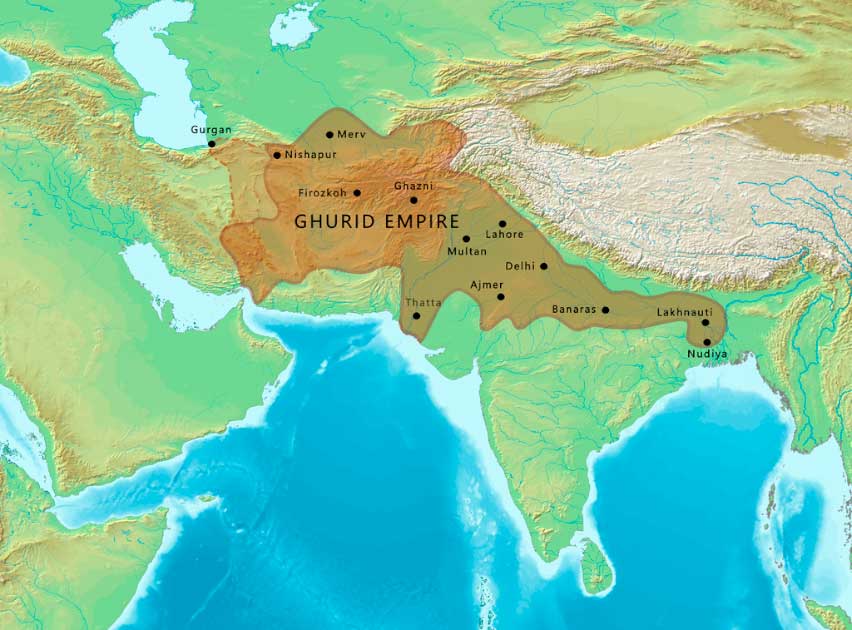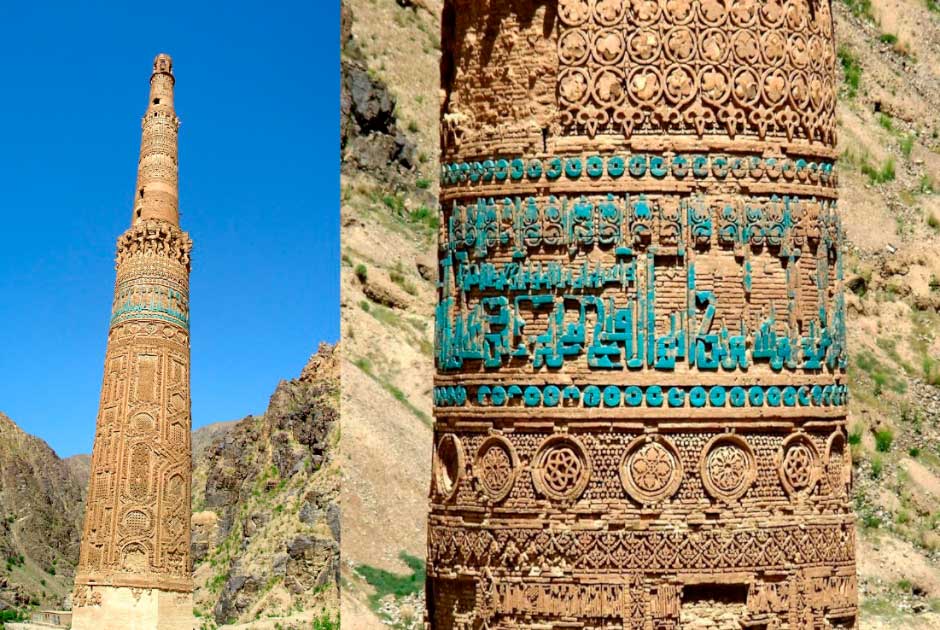The Ghurid Empire is perhaps one of the less familiar ancient civilizations. However, just because they are unfamiliar does not mean they were insignificant, and for generations these Persians ruled a vast swathe of the mountains and plains of what is now Afghanistan, all the way across northern India.
Here, from the 10th century until their destruction in 1215 they ruled inviolate. And here, amidst the high peaks of the mountains of Ghor they built their great city of Firozkoh.
It has been called the wonder of the age and one of the greatest cities ever built, a vast summer capital amidst the mountains. “Firozkoh” translates from the Persian to mean “turquoise mountain” and this great metropolis flourished as a center for Ghurid culture, wealth and power for almost a century, before it was destroyed.
Today the city is lost, its location unknown. Tantalizing clues are offered as to where it might have been, but this is only guesswork. Where is this lost city, Firozkoh of the Ghurids?
What was Firozkoh?
Built as a summer capital of the Ghurid Dynasty in the Ghor area of central Afghanistan, Firozkoh suited the needs of the semi-nomadic Ghurids as a counterpoint to their other great city, Herat. Today, Herat is the third largest city in Afghanistan and retains many of its cultural treasures, whereas Firozkoh, once its equal in magnificence, is lost.
Firozkoh did not survive the fall of the Ghurids in 1215, and the city was destroyed in 1223 after a siege by Tolui, son of Genghis Khan. By that point the city was over 70 years old, and all the great resources of the empire had been poured into its creation.

In 1150 the Ghurid warlord Ala Al-Din Husayn overthrew the existing Ghaznavid Sultanate and burned their capital, Ghazna, to the ground. Records indicate that 60,000 people were killed in the destruction, and the remaining population were enslaved and taken away.
- The Sky Fortress Of Kuelap And Cliffside Mummies Of The Chachapoyas
- The Great Bell of Dhammazedi: Where is the Largest Bell Ever Made?
These slaves had a purpose, and according to the great historian and chronicler of the Ghurids Minhaj al-Siraj Juzjani it was their hands which carried the building supplies to Firozkoh, and their blood which bound the mud together to build this first great Ghurid city: Firozkoh.
In truth the city had already been in existence for several years by this point, being originally founded in 1146 by Al-din Husayn’s brother, Qutb al-Din Muhammad. Various Ghurid sultans added to the city and Firozkoh continued to grow throughout the ruling period as the dynasty extended.
However the Ghurid empire, despite its seeming strength and permanence, would not last, and it would be religion which caused its downfall. In 1199, the Ghurid sultan, Ghiyath al-Din, ordered the entire empire abandon the Karramiyya sect of Islam in favor of Shafi’i law. This decision was very unpopular with the city’s inhabitants and led to disturbances.
Gradually the Ghurid empire started to collapse after the death of Ghiyath al-Din in 1203, followed quickly by the death of his successor Muizz al-Din in 1206. For a time, Firozkoh continued to proper, but the Ghurids themselves were weakening, and their enemies knew it. After several incursions into Ghurid territory, at the end of 1215 the turquoise mountain was attacked by Muhammad II of the neighboring Khwarazmian empire, and the city was taken.
The inhabitants resisted their new overlords, seizing on an opportunity to rebel when the Khwarazmians were themselves threatened by Mongol attacks from the east. This did not deliver the freedom from oppression they craved however, as the Mongols swept the Khwarazmians before them until they, too, stood at the gates of Firozkoh in 1220.
This time, the inhabitants of the turquoise mountain were lucky, as the onset of winter forced the Mongolian force to retreat. However, three years later in 1223 they returned, and in greater numbers. Firozkoh had no choice: they had to evacuate to Herat, or face a slaughter.
Again it is Minhaj al-Siraj Juzjani who records what happened next. The Mongols had no need for a summer city so far from their homelands, and could not leave such a stronghold to the enemy. They razed the city to the ground, wiping it from the face of the earth forever.
Even the location of the city is lost today. Or at least, that is the common belief. However, out in the far flung reaches of the mountains there is a single clue to where the city might have been.
In the Shahrak region of the Ghor province of Afghanistan, deep in the inaccessible mountains, can be found the Minaret of Jam. This single, solitary tower may be all that remains of Firozkoh.
What Remains?
In the maze of deserted and narrow gorges in the central mountains of Afghanistan, a single tower rises 200 feet (60 m) in the air, a column of decorated and carved terracotta inset with lines of turquoise tiles. There is nothing else.

The walls of the mountain form a tight circle around it, and at its base, there are two rivers. The mountains flow from the high descending mountains to the canyons into the wilderness.
If you count it by distance, then it would take two weeks to walk from Herat to reach this. The area was called the valley of Jam, and it was a place of relative tranquility, which is now protected by the high mountains from the pro-Taliban feudal lord from the south and from the anti-Taliban feudal lord from the north.
But for now, nobody lives there and the tower stands mute testament to whatever was once here. It certainly appears to be the right age, some 800 years old according to an inscription at the top. A dense chain of hexagons, pentagons, and diamonds is carved in its column and, in Persian blue tiles on the top of the tower the words “Ghiyath al-Din Muhammad, the king of kings” are carved.
Could the Minaret of Jam truly be the last surviving structure of the great city of Firozkoh? The ruler is correct, the location seems plausible, and nothing else this grand has been constructed since in the region save the structures of the Timurids in the 15th century.
Perhaps we may find Firozkoh, after all.
Top Image: Firozkoh has been lost since its destruction in 1223, although there are clues to its whereabouts. Source: Esther / Abode Stock.
By Bipin Dimri